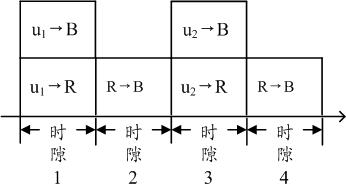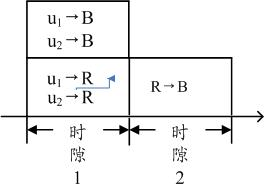User grouping and resource allocation method for wireless relay network
A technology of wireless relay network and user grouping, which is applied in the field of user grouping and resource allocation of wireless relay network, and can solve the problems of users being difficult to be served, unable to realize the maximum rate transmission of user information, and low network transmission efficiency
- Summary
- Abstract
- Description
- Claims
- Application Information
AI Technical Summary
Problems solved by technology
Method used
Image
Examples
Embodiment 1
[0067] Such as image 3 As shown, Embodiment 1 of the present invention provides a user grouping and resource allocation method for a wireless relay network. The scenarios that this method is applicable to include but are not limited to: cellular communication networks (such as multi-user uplink multiple access A relay communication system, which can process uplink data services), the method includes the following steps:
[0068] Step 301, in each scheduling period, divide the users into corresponding user groups according to the average received power information of the downlink pilot signals of activated users; the user groups include: base station service area group, relay service area group and hybrid service Block group; when a user is assigned a resource, the user is removed from the user group in which he is assigned.
[0069] Among them, in each scheduling period, activate the users with scheduling needs in the cell, determine the average received power information of...
PUM
 Login to View More
Login to View More Abstract
Description
Claims
Application Information
 Login to View More
Login to View More - R&D
- Intellectual Property
- Life Sciences
- Materials
- Tech Scout
- Unparalleled Data Quality
- Higher Quality Content
- 60% Fewer Hallucinations
Browse by: Latest US Patents, China's latest patents, Technical Efficacy Thesaurus, Application Domain, Technology Topic, Popular Technical Reports.
© 2025 PatSnap. All rights reserved.Legal|Privacy policy|Modern Slavery Act Transparency Statement|Sitemap|About US| Contact US: help@patsnap.com



